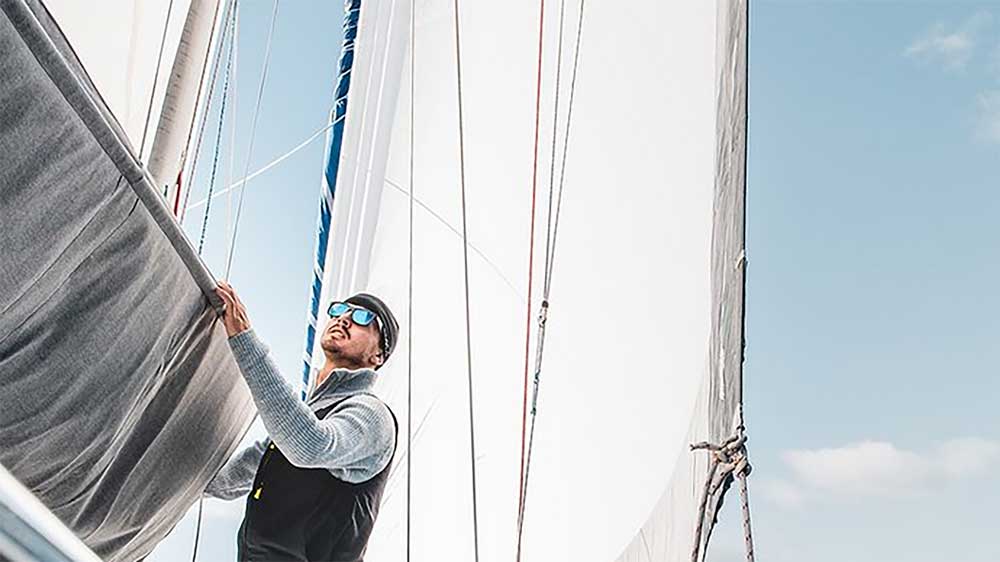
Replacing a Chafed Furling Line: Calico Skies
Sailing enthusiasts Grace and Bill, the popular YouTube sailors from Calico Skies, have recently shared an insightful video about their…
Read More about Replacing a Chafed Furling Line: Calico Skies

Sailing enthusiasts Grace and Bill, the popular YouTube sailors from Calico Skies, have recently shared an insightful video about their…
Read More about Replacing a Chafed Furling Line: Calico Skies

This comprehensive article delves into the world of sail selection for cruisers, shedding light on the often overlooked domain of downwind sails. It begins by acknowledging the historical emphasis on racing sails within the sail-making industry, highlighting the specific needs of cruisers that require attention.
The article explores various types of downwind sails, such as code zeros, genoas, and spinnakers, offering insights into their characteristics and applications. It simplifies complex sail terminology, making it accessible to both newcomers and experienced sailors. The explanation of percentage-based sizing (LP) versus J measurement provides a clear understanding of sail dimensions.
Cruisers are guided on building a sail inventory tailored to their needs, considering factors like space, budget, and intended sailing destinations. The advantages of sail customization and collaboration with sail designers are highlighted, emphasizing the importance of sails optimized for individual preferences and conditions.
The article concludes by detailing different downwind sail options, including code zeros, genoas, cruising spinnakers, reachers, gennakers, and symmetrical spinnakers. Each sail type’s characteristics, handling, and suitability for various wind conditions are thoroughly explained, helping cruisers make informed choices.
Throughout the article, the reader is encouraged to engage with Precision Sails, a sailmaker with expertise in cruiser-specific sail solutions. The article effectively demystifies sail selection, making it a valuable resource for cruisers seeking an enhanced sailing experience.
Read More about Types of Downwind Sails: Understanding Code Zeros, Spinnakers, Genoas, and More

Join in as Steve and Judy from the Sailing Fair Isle walk you through their experience of ordering new sails from Precision Sails and our process!
Read More about Choosing the Best Cruising Sail – Technical Corner

Sails can get moldy, but it can be avoided. You have to make sure to try to keep it dry and avoid furling the sail when it’s wet. Taking the sail down and storing it is also an effective method when trying to combat mold. Mold and mildew show up differently in Dacron and Laminate sails and as such these sail fabrics require different techniques. This video explores the best ways to keep your Dacron and laminate sails clean and extend their longevity. […]
Read More about Can Different Types of Sailcloth Become Moldy?

Sails help keep you safe on the water. When purchasing a new boat, it is always a very exciting time, but it’s important to make adequate checks to ensure your new vessel is seaworthy and safe.
Setting up your rigging to suit your boat is paramount in achieving peak performance from your sails. On Ask Precision Sails we had a question from customer Jim who wants to know: “Should I add a topping lift to my boat? And if so how do I rig it up?” First of […]
Choosing the right headsail LP (Luff-Perpendicular) depends on several things. When, where, and why you are sailing, as well as your rig set-up and limitations. The most versatile LP% is 135%. Your sailing destination and conditions and rig type help decide what size of headsail LP to choose. The type of sailing, racing, or cruising sailing, also factors in when choosing a headsail LP percentage. Give Precision Sails a call and we can help you out!
Are laminate sails worth upgrading to from regular Dacron sails? Yes, in some cases, in others, no. The main difference between a Dacron and a laminate sail is in the shape of your sails when you tack and how this impacts on the performance of the maneuver. The price point also has to feel right for you. If there is a large difference in price between Dacron and laminate sails, then a set of high-quality Dacron sails are still going to satisfy your needs for the long term. It all depends on what you are trying to get out of your boat and which sails you will need to accomplish those goals.
Ever wonder what sail performance means? It’s several different components of the overall feel of a boat. Responsiveness, comfort, wind angles, and speeds are all calculated differently by a well performing sail. Sail performance is something that everyone should be concerned with. Sail performance doesn’t just affect when you get to your destination, but how you get there.
Ever wondered how to measure for a new main while your mast and rigging is down or taken apart? Clients tell us all the time that they can’t get their measurements to us because their sailboat’s rigs are taken apart. This blog has the information on how to get the measurements for your mast sliders, backstay position, tack connections, clew slug, Max foot, halyard shackle, and your max hoist. The process is made easier with a buddy so try to have one around and call us anytime, we’re here to help.
Read More about Measuring for New Sails: Mainsail With the Mast Down
Learn how Precision Sails defines their Rig Spec measurements and Dimensions. This blog will help you to understand how Precision Sails labels sailboat rig specifications. If you need a replacement or new mainsail and /or headsail you will need to measure your sailboat’s rigging, sails, and rigs. One thing we tell sailors here at Precision Sails is “the effort you put into measuring really does translate into the quality of sail you get.” If quality measurements are given to designers, it allows them to create an excellent performing sail.
Read More about Rig Specification Diagram For Sailboats: Mainsail & Headsail